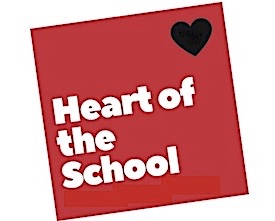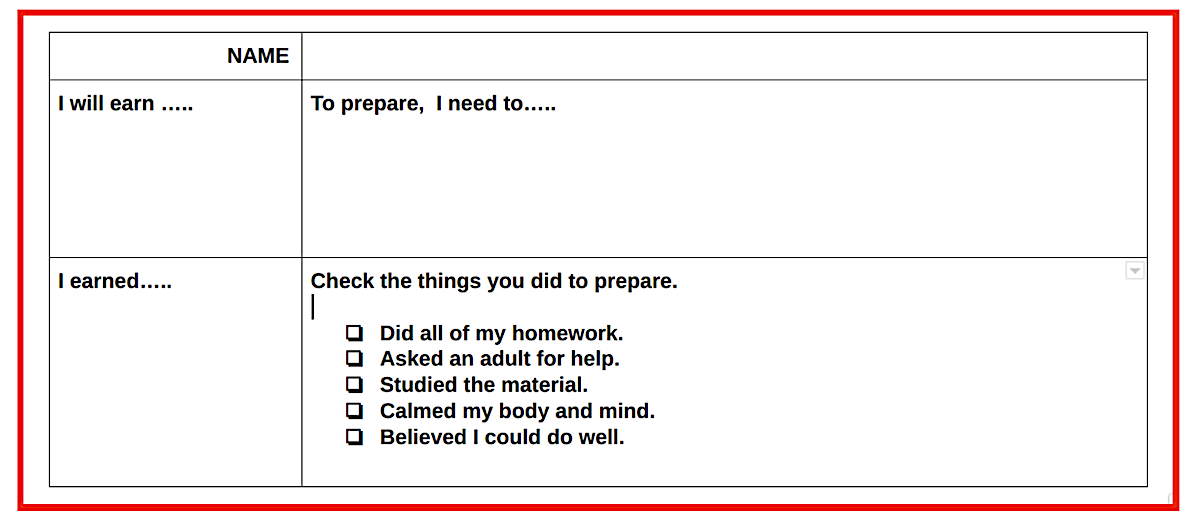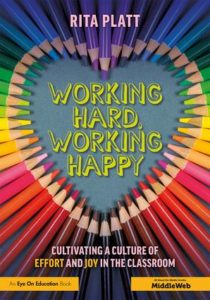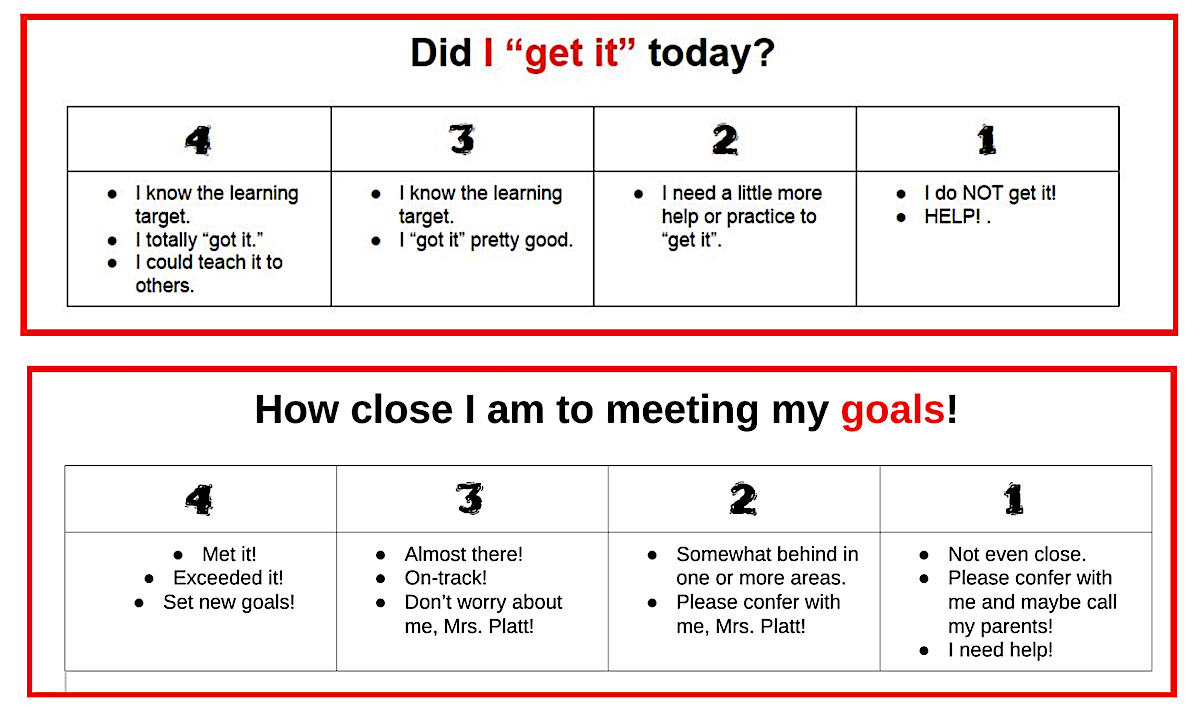Tap Out! Help Students Self-Assess Fast
A MiddleWeb Blog
 Looking for a fresh, fun way to quickly and easily assess your students’ progress? Try having them “Tap Out!”
Looking for a fresh, fun way to quickly and easily assess your students’ progress? Try having them “Tap Out!”
Tap Out is a very simple method for helping students think about their progress toward meeting a learning target. It also provides teachers with on-going formative assessment data that they can use to help students meet academic and social goals.
(Inside this post, I’ve included a “Covid” version you might try. And near the end there’s a bonus idea – having your students self report their likely grades.)
Have Students Self-Assess?
Helping students practice self-assessment of their learning process is a win-win.
When students self-assess:
• They are more likely to take ownership of their learning.
• The locus of control over learning shifts from teacher to student.
• They must reflect on the criteria for success.
• They have a clearer understanding of their own next steps.
• They can see themselves growing and making progress (and that’s motivating!).
• Teachers have a great gateway to a meaningful conversation and an inroad to providing productive feedback to individual learners.
• Teachers get an informal data set that can be meaningful for developing future lessons.
Give it a Try!

Step 1:
Tape the numbers 1 through four on your classroom door frame.
Step 2:
Create a rubric for students. You can use a specific rubric or a very generalized one. Look below for an idea. See examples of the rubrics I use with students in this document.
Step 3:
Teach students to read and use a rubric. This is an important step! Don’t assume students know how to read a rubric until you have taught them how. Even if they have been “using” rubrics for a long time. I have found that while students know what a rubric looks like, they don’t always understand how they work.
As students walk out the door, have them “tap out” by touching the number that corresponds with their self-assessed levels on the rubric.
Step 5:
Use the information students offer. Record it on a clipboard and use it to differentiate, accelerate, and remediate. This is a great way to set up:
- flexible groupings,
- decide on who needs more instruction,
- prepare for peer-tutoring,
- decide who you need to confer with, and
- generally decide what comes next in your instructional sequence.
Step 6:
Follow up with your kiddos! Continually work with your students to ensure they understand how to use the rubrics and the importance of self-assessment. Children who learn to accurately gauge their own levels of understanding are better equipped to move forward than those who don’t.
A Touch-Free or Online Modification
How can we “tap-out” without touching – or do it in an online setting? The most simple solution is to have kiddos hold up the number of fingers that show their score rather than having them touch the actual numbers.
This finger strategy can also be used in a virtual classroom or during a Zoom or Google Meet session. You could also create a quick Google Form survey, simply asking students a few questions about their level of understanding.
The results can be quickly and easily downloaded to a Google spreadsheet, and in the snap of a finger you have usable data to guide future lessons.
Bonus! Self-Reporting of Grades
After you give “tap out” a try, you might be ready to take your students to the next level. John Hattie is an education researcher who does meta-analyses of meta-analyses. While that might initially sound like gobbledygook, it is actually a simple concept. A meta-analysis is what happens when researchers look at multiple studies on a given topic and aggregate the data to derive a single set of results.
For example, if a researcher wanted to know how effective a strategy is – let’s say, students understanding learning targets – the researcher looks at all of the available studies on students’ knowledge of learning targets. The researcher uses a statistical approach to combine the data from all of the studies in order to obtain an effect strength – the probable impact a given strategy will have.
In his book Visible Learning, Hattie synthesized over 800 meta-analyses of educational research to share a list of 139 influences on student academic achievement. Each influence on the list is ranked by effect strength, or amount of impact. If an influence is ranked as having an effect strength of .4 or higher, it is an influence that should be taken very seriously by educators who wish to improve student achievement outcomes. (See Visible Learning for Teachers for Hattie’s user-friendly version!)
Well, guess what ranks right at the top? Something Hattie calls Student Self-Reporting of Grades. In a nutshell, student self-reporting of grades is about asking students to think about how well they might do on a given task, assignment, test, or learning target before they start working on it.
The Glossary of Visible Learning shares this example:
Before an exam, ask your class to write down what mark (grade) the student expects to achieve. Use this information to engage the student to try to perform even better.
According to the research (and common sense), students tend to know their own abilities and levels of understanding. Once we help students reflect on what they know, we can ask them to challenge themselves to do just a little better than they thought they could. When they do, it leads to increased confidence, motivation, and sense of ownership of learning.
Dipping a Toe in the Visible Learning Pool
This year a teacher at my school, Mr. Raygor, tried this! Students self-reported their grades for all the months we were in physical school. Mr. Raygor and I developed a Self-Reporting Reflection Sheet (click here for a copy) and have worked with students to use it before many projects, tests, and assignments.

For more on the importance of self-assessment, see Barbara Blackburn’s post here. Then give one or more of the ideas a try and let me know how it goes!



































